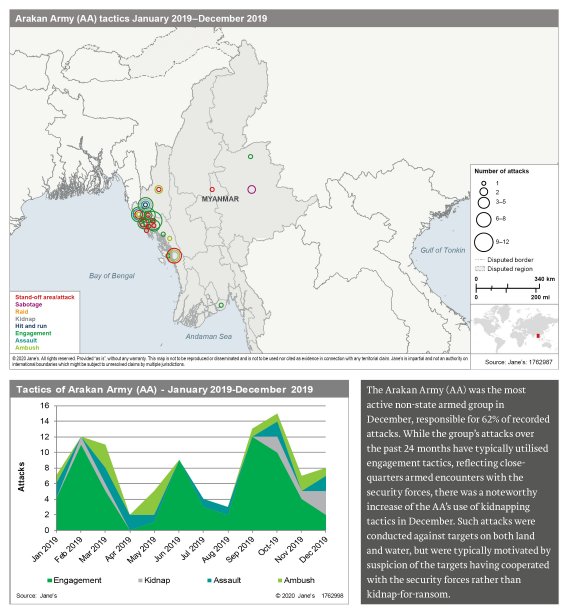
Behind a ban on media access and an internet shutdown across wide swathes of western Rakhine state, the Tatmadaw (Myanmar armed forces) has further escalated its broadest and most intense counter-insurgency campaign since the nation’s independence in 1948.
Involving all three armed services, the current dry season campaign, which began in January, has triggered intense clashes and prompted the Rakhine nationalist Arakan Army (AA) to extend operations from contested northern and central regions of the state into the hitherto quiet south of the western seaboard state, which is strategically located between central Myanmar and the Bay of Bengal.
The Tatmadaw campaign followed a sharp escalation in hostilities in the state during 2019, with the initiative held largely by the AA as the Tatmadaw struggled to meet an unprecedented challenge from a well-organised and widely popular force drawing on grievances driven by decades of poverty and political marginalisation. By the 2019 monsoon season between May and October, the Tatmadaw appeared to have largely regained its balance and established a heavily reinforced presence, albeit frequently contested, over the rural flatlands of north-central Rakhine.
By mid-2019, that process of reinforcement had resulted in 42 locally based battalions under the military’s Ann-based Western Command, bolstered by mobile Tactical Operations Commands (TOC) drawn from six of the 10 centrally commanded Light Infantry Divisions (LID) that constitute the army’s strategic intervention reserve. Comprising three battalions, a TOC is typically a force of approximately 500 troops or the equivalent of an understrength battalion in most other armies. Each LID is made up of three TOCs.

Looking to read the full article?
Gain unlimited access to Janes news and more...